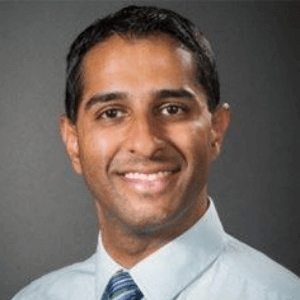Title : Cost effectiveness analysis based on real world constructs, tear size, and implant cost for rotator cuff repair at 1, 5 and 10 years
Abstract:
Purpose: To evaluate the cost-effectiveness of RCR by utilizing a real-world cost analysis and real-world possibilities of commercial surgical constructs for arthroscopic rotator cuff repair sorted by tear size.
Methods: Real-world cost data and previously published data on both anchor failure strengths and retear rates by tear size & construct were input into a Markov model with time points of one, five, and ten years. Cost effectiveness was assessed in terms of cost per quality adjusted life year. Health states included intact repair, asymptomatic or symptomatic retear, revision RCR, and cuff tear arthropathy. Knotted and knotless single row (SR) and double row (DR) constructs using anchors from Smith & Nephew, Arthrex, and Stryker were included.
Results: For small tears, the optimal 10-year strategy was Corkscrew Biocomposite/Swivelock Biocomposite DR knotted (Arthrex, Naples FL), and had an incremental cost effectiveness ratio (ICER) of $12,562/QALY over nonoperative treatment while adding 0.54 QALY. For medium tears, the optimal strategy was Corkscrew Biocomposite/Swivelock Biocomposite DR knotted (Arthrex, Naples FL), and had an ICER of $16,678/QALY and added 0.51 QALY. For large and massive tears, Swivelock Biocomposite DR knotless (Arthrex, Naples FL) and Healicoil PEEK/Footprint Ultra PEEK DR knotless (Smith & Nephew, Andover, MA) respectively were preferred. These added up to 0.53 QALY (large) and 0.46 QALY (massive) over nonoperative treatment.
Conclusion: We uniquely used real-world suture anchors and construct configurations individually for multiple commercially available systems & every tear size in short- and long-term cost effectiveness. Surgeons and healthcare providers may use the results of this study to help with anchor and construct selection when performing arthroscopic rotator cuff repairs for optimum value-based care.
What will the audience learn from your presentation?
- The cost effectiveness of rotator cuff repair is affected by both the construct used and the suture anchors used
- For small tears, the optimal 10-year strategy was Corkscrew Biocomposite/Swivelock Biocomposite DR knotted
- For medium tears, the optimal strategy was Corkscrew Biocomposite/Swivelock Biocomposite DR knotted
- For large and massive tears, Swivelock Biocomposite DR knotless and Healicoil PEEK/Footprint Ultra PEEK DR knotless respectively, were preferred




